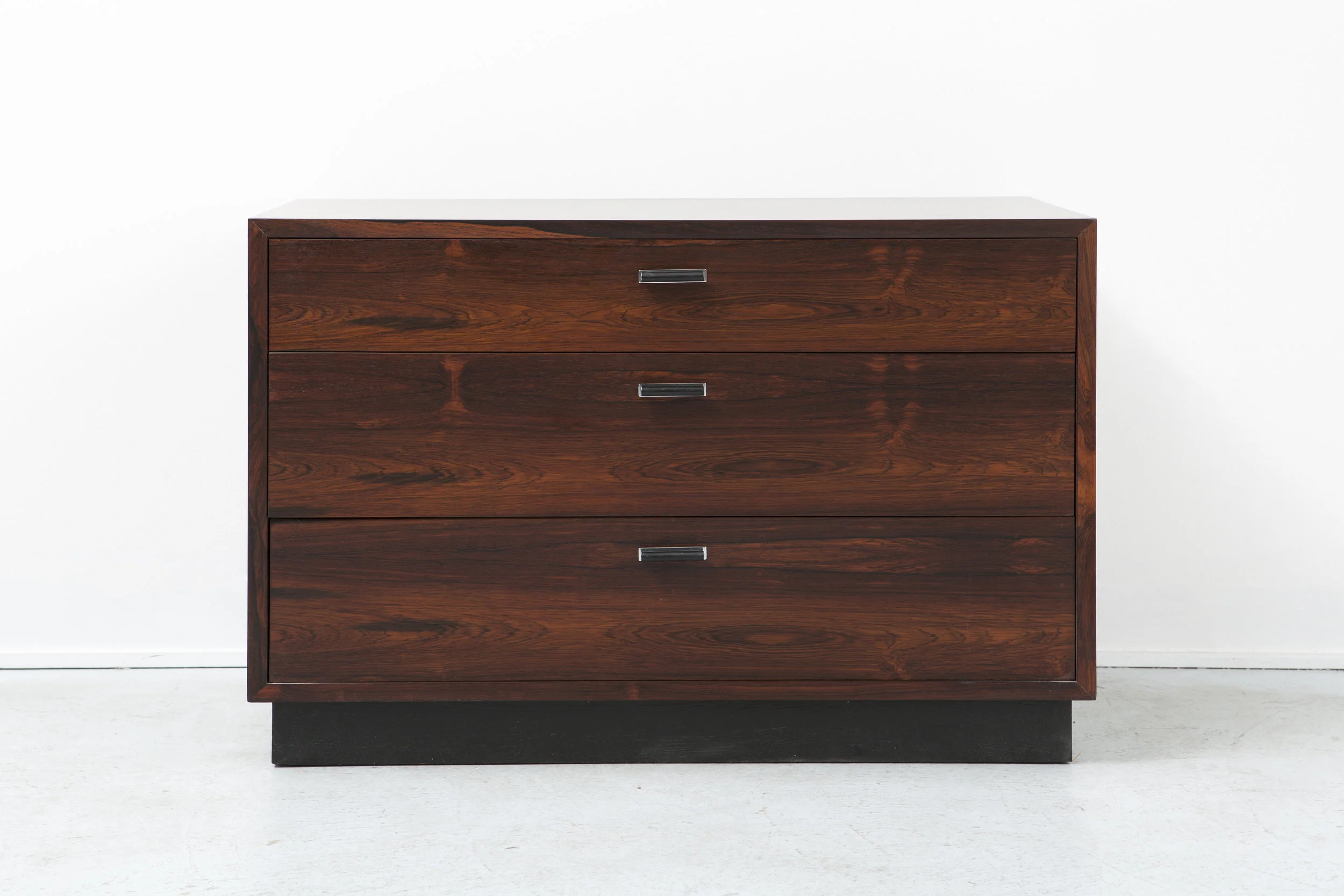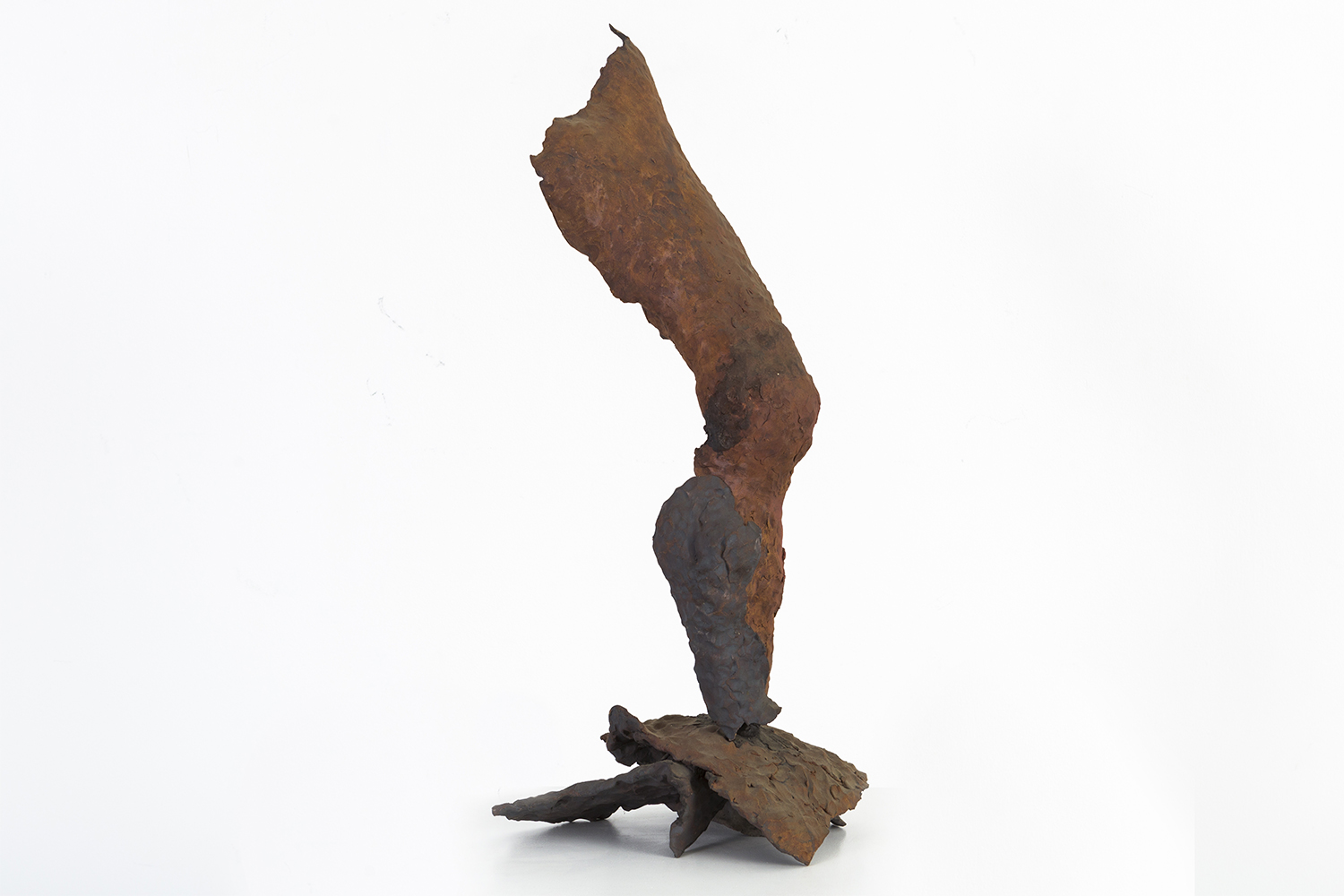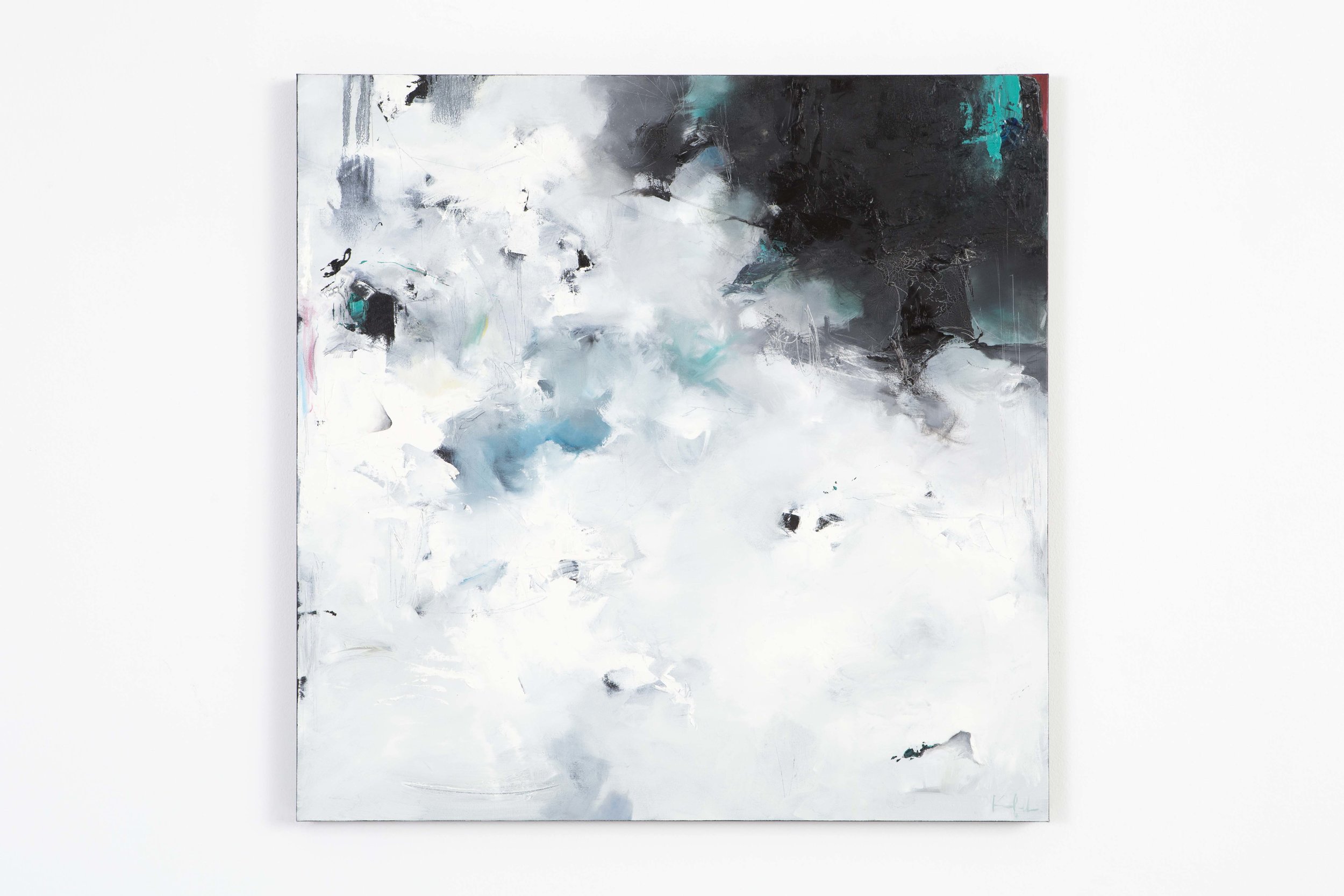SLEEP BY TED STANUGA
Wrapping his composition with frothy, energetic brushstrokes; Stanuga’s Sleep supports itself through the tension in its lines. Wide, rigid brush strokes of varying transparency connect across the picture to form spaces where washes of light grey and deep blue flow. Spindly, bent lines contrast a net of ribbonlike forms. Below them, converging planes overlay a foggy atmosphere. Stanuga’s refined sensibility from decades of painting is made clear in this work on paper.
SET OF ADRIAN PEARSALL LOUNGE CHAIRS
Often overshadowed by Kagan and Noguchi, Pearsall doesn’t get quite the same recognition for his groundbreaking designs of the 1960s. After selling Craft Associates to Lane Furniture Company in 1968, Pearsall went on to form Comfort Designs with John Graham. Drifting away from the Atomic Age design’s preference for free flowing wood and glass, Pearsall moved into solid, angular geometry consistent with futuristic styles of the 1980s. Reupholstered in vintage linen velvet, these two lounge chairs have a rich, saturated color whose linear forms respond elegantly to light.
HARVEY PROBBER ROSEWOOD DRESSER
Harvey Probber took on the second half of the 20th Century quite differently from Pearsall, focusing instead on simple geometric shapes made with elegant materials. While never stylistically approaching the forms that other avant-garde designers were interested in, Probber pioneered the concept of modular furniture. His furniture is carefully designed to interact dynamically with other geometries in both the room and furnishings. Some of his more iconic pieces, like the Cubo sofa, show how simple rectangles, stacked on top of each other, form an elegantly rectilinear sofa. This rosewood dresser from the 1960s operates on the same design principles. Masterful craftsmanship, alongside beautiful proportions create a simple, understated, but wholly beautiful piece of furniture.

















